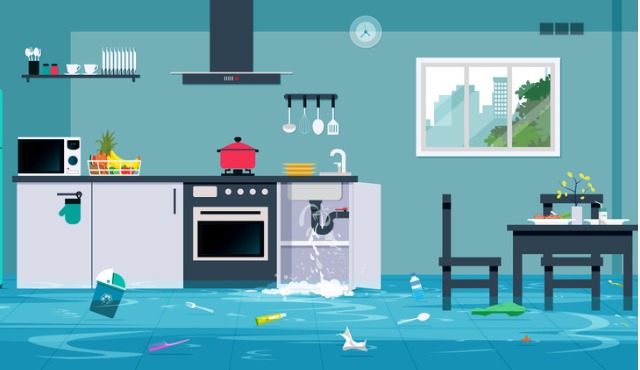By Anita Ginsburg
Whether it's a broken pipe or a flash flood, homeowners need to take immediate action when their home floods. The longer water stands in a home, the more damage will be done.
Related: How to Sell a Home in a Flood-Prone Area
The first 24 hours following a flood are critical to ensure safety and give your home and belongings the best chance to recover. Here are five steps you should take as a homeowner if your property floods:
Make Sure It's Safe
If you had to evacuate during a flood, make sure it’s safe to return. Look for downed power lines and be aware of odors that may signify a gas leak or backed-up sewage. If it's not safe, don't return to your property. Contact your utility companies if you suspect damage to the gas, electric and/or sewer lines.
Take Photos and Video
Before you start fixing anything, take photos and make videos of the damage for your insurance company. If you do any emergency water damage restoration before you document the damage, your insurance company might not reimburse you for it.
Contact Your Insurance Company
After you've handled the first two steps, it's time to call your insurance company. Keep in mind that if your entire area has flooded, your local agent might be overwhelmed with calls. In that case, try contacting your insurance company's main office. Once you get through, follow their instructions, as they may want to send an adjuster before you make any restoration or repairs. Your insurance company may also suggest a water damage restoration company they work with.
Call an Emergency Water Damage Restoration Company
A company that specializes in emergency water damage restoration has the equipment and know-how to get your home clean and dry quickly. It's very important for emergency water damage restoration to begin as soon as possible in order to stop mold growth.
Your water damage restoration company will use pumps to extract the water from your home in addition to fans and heating units to speed drying. They'll also help remove damaged items that can't be restored. Finally, they'll help clean and sanitize your home and belongings.
Repairing Structural Damage
If the flooding was serious, there could be structural damage to your home. In addition to damaging drywall and wood siding, floodwaters can also lift and crack a home's foundation. While you can see damaged drywall and siding yourself, damage to the foundation won't be obvious. It's a good idea to have a home inspection done following a flood.
There is no time to waste if your home has been flooded. You need to act quickly for a water damage restoration to be successful.
 Anita Ginsburg is a freelance writer from Denver, Colorado. She studied at Colorado State University and now enjoys writing about health, business and family. A mother of two wonderful children, she loves traveling with her family whenever she isn’t writing. She recommends calling for emergency water damage restoration as soon as possible. You can find her on Twitter @anitaginsburg.
Anita Ginsburg is a freelance writer from Denver, Colorado. She studied at Colorado State University and now enjoys writing about health, business and family. A mother of two wonderful children, she loves traveling with her family whenever she isn’t writing. She recommends calling for emergency water damage restoration as soon as possible. You can find her on Twitter @anitaginsburg.








